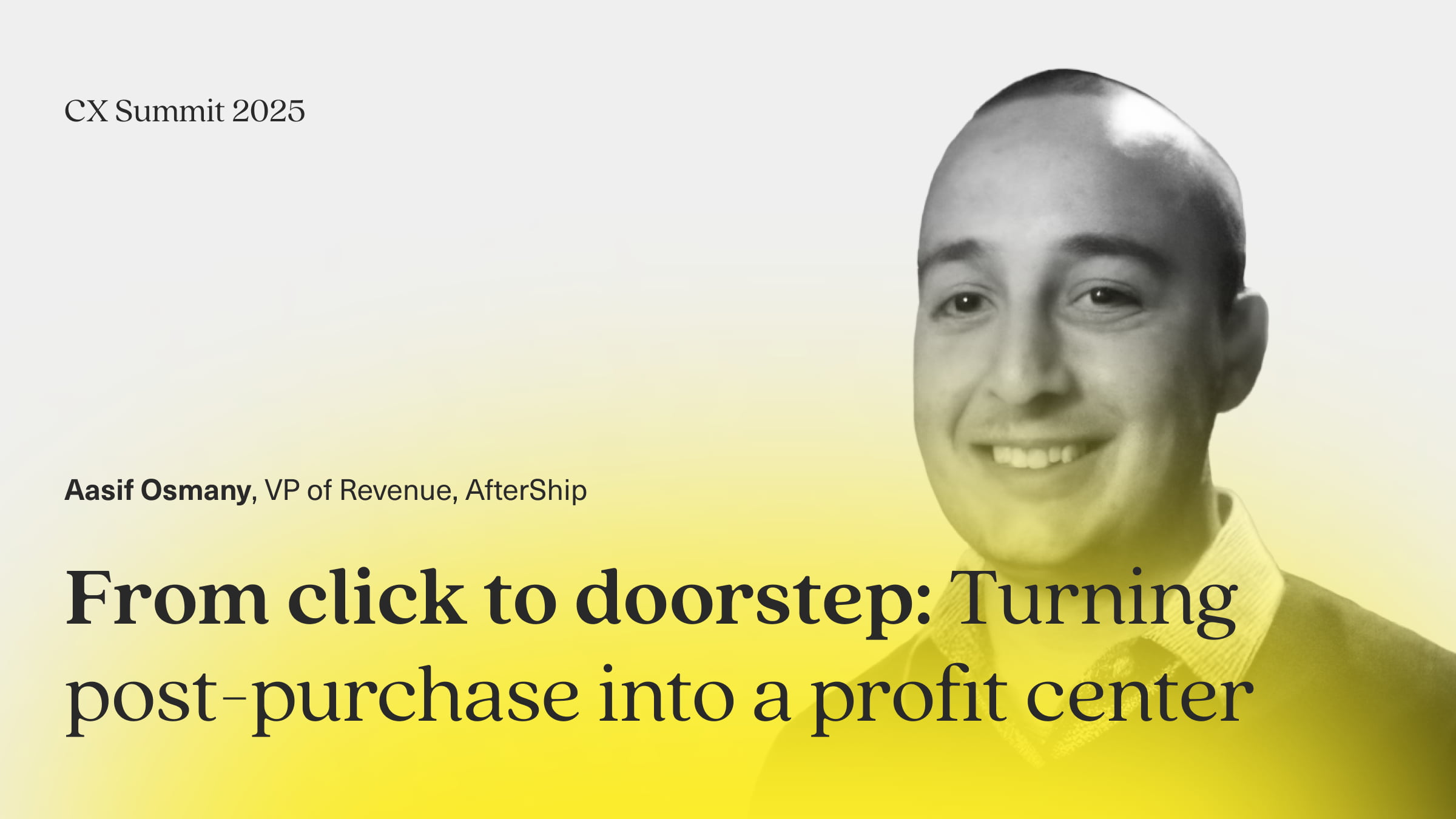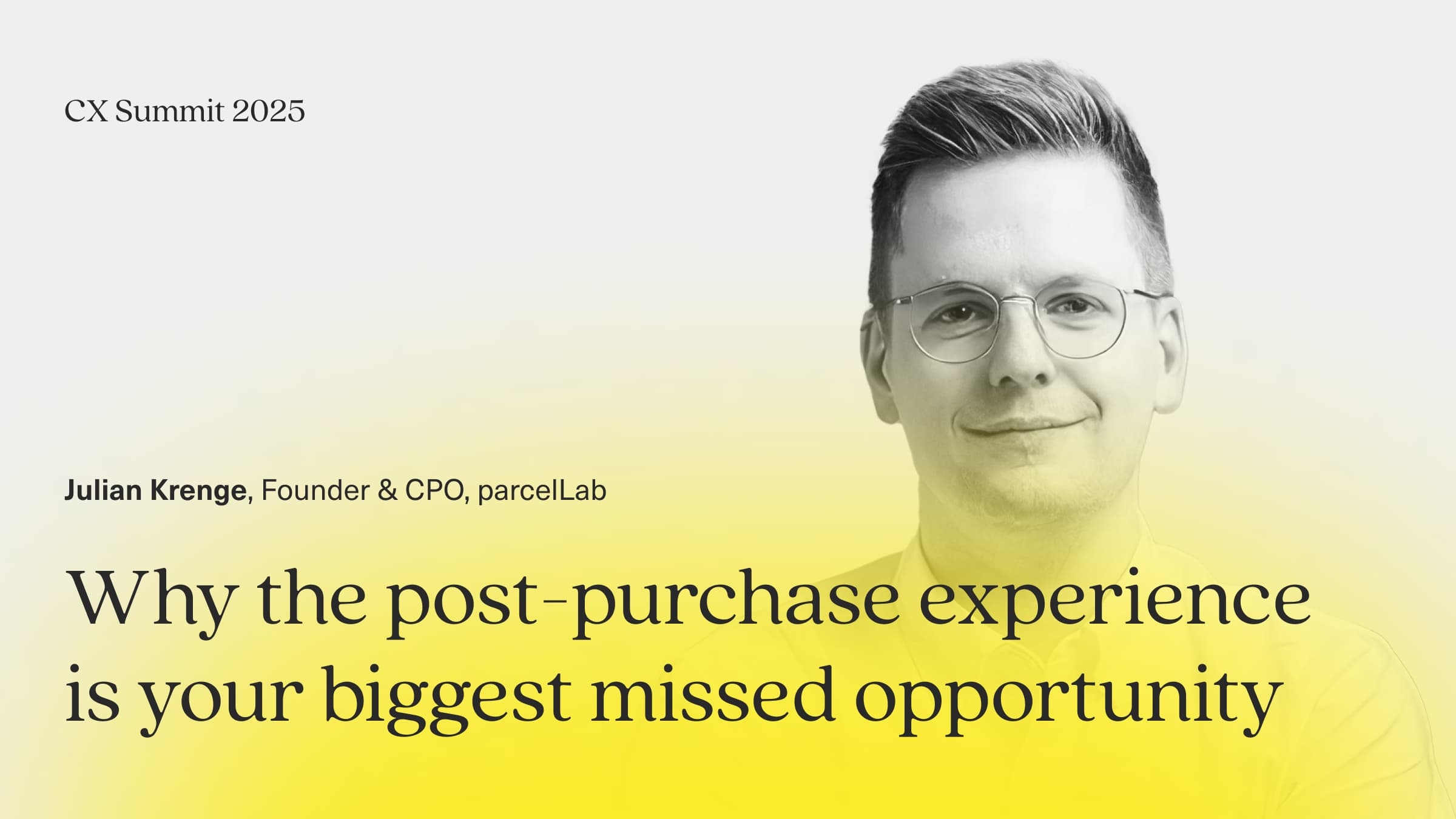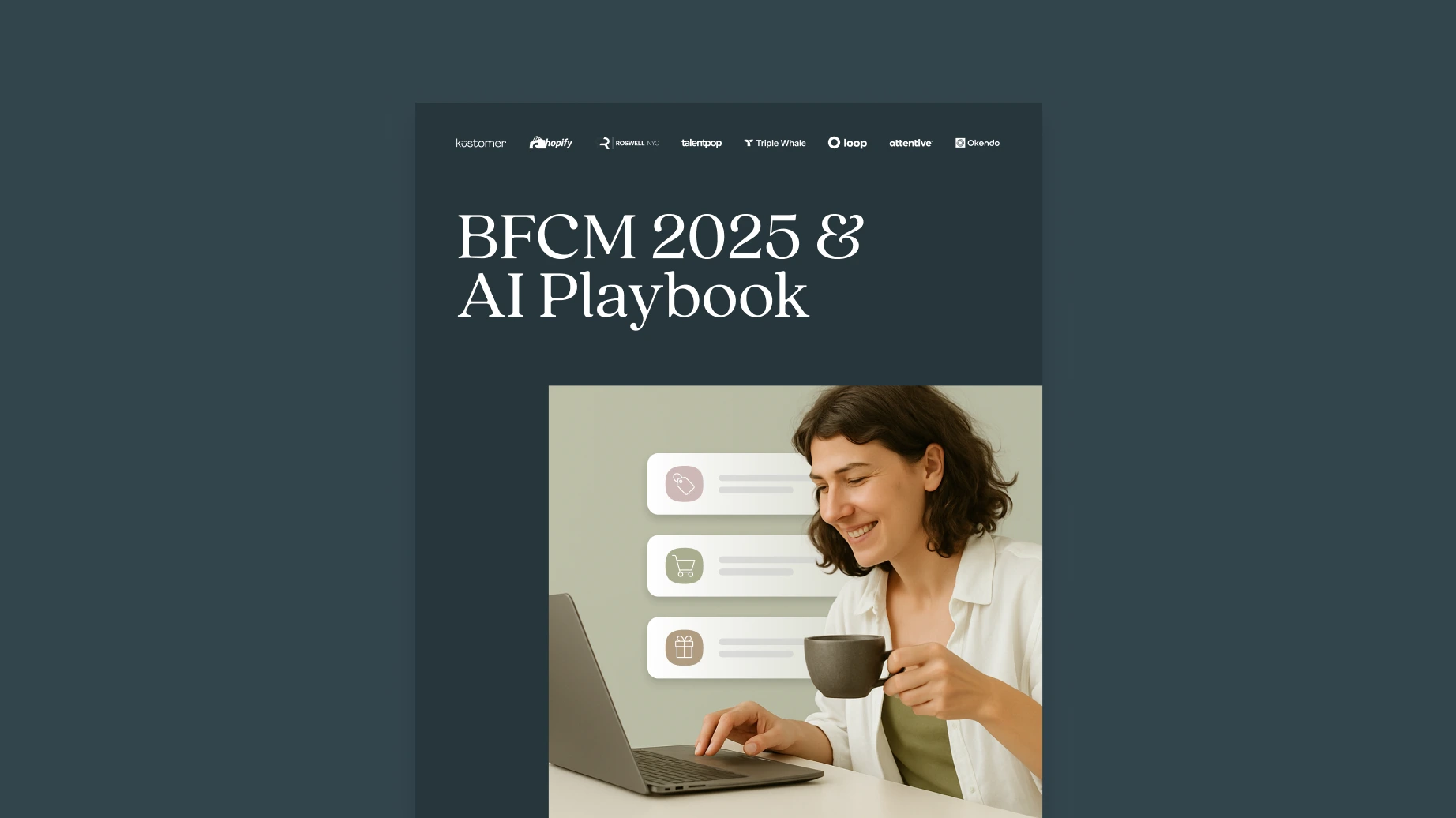With over a decade of experience in support—eight years of which have been focused specifically on ecommerce—Aasif Osmany brings a deep understanding of how the space has evolved. From the basics of help desk management to the cutting edge of AI and automation, he shares hard-earned insights to help support teams level up their post-purchase experience.
This interview has been edited for clarity.
Gabe Larsen: Let’s dive in. I have a list of questions for you, so I am going to run through them rapid-fire. Starting at the top: Why is the post-purchase experience such an untapped opportunity for most brands?
Aasif Osmany: That is a great question and one I get often. For a long time, brands have focused heavily on the pre-purchase journey—ads, email campaigns, influencer deals—you name it. Everything is geared toward getting the sale. But once the transaction is complete, it goes quiet, and the support team—usually the unsung heroes—steps in.
Today’s shoppers expect more than just a receipt. They want updates, engagement, and a little love from the brand or the support teams. That is where the post-purchase experience becomes a golden opportunity. It allows brands to keep the conversation going, build loyalty, and create those “I love this brand” moments.
Also, from my eight years in the ecommerce space, I can tell you it is five times cheaper to retain a customer than acquire a new one.
Gabe: Yes, and it is probably even more than that now. With acquisition costs rising, that post-purchase investment is not just good CX—it is smart business.
Aasif: Exactly. When you invest in post-purchase, you are not just making your customers happy, you are also making smart financial decisions.
Gabe: If you had to choose one post-purchase feature that makes the biggest impact on customers, what would it be?
Aasif: One that often gets overlooked is AI-powered Estimated Delivery Date. EDD uses machine learning to predict accurate delivery dates based on real-time and historical shipping data.
Rather than relying solely on carrier estimates—which we all know can be vague—our model analyzes millions of shipments across thousands of carriers. It factors in things like weather and regional delivery trends to offer reliable predictions.
Expectations are everything. When you are shopping on Amazon, you are shown exactly when to expect your order before you buy. That same clarity should exist post-purchase. Customers do not actually care that their order is in Albuquerque—they care about when it will arrive. EDD helps set and meet those expectations.
Gabe: That is a great reframe. People do not really want the location, they want the timeline. So true.
Aasif: Exactly. If your support agents are just telling customers where the package is, you are probably going to get some frustrated replies. They are thinking, “That is great—but when am I going to get it?”
Gabe: That makes sense. And using real-time data and automation to predict arrival more accurately is a great way to elevate that post-purchase experience. So, how are brands getting creative with how they communicate shipment updates?
Aasif: One feature I love—and I think we will see more of it soon—is our Apple Wallet integration. Most people think of Apple Wallet as a place to store boarding passes or ID cards. But in the top left corner, you can also access package tracking.
With AfterShip’s integration, customers can add shipments to Apple Wallet and track them without downloading an app or logging in. Many brands invest in building mobile apps just to send push notifications. But with Apple Wallet, those updates are built in.
Gabe: That is interesting. I hate downloading an app for every brand I order from. This sounds like a seamless workaround. But I imagine it means customers spend less time in the brand’s app?
Aasif: Yes, there is a trade-off. But it delivers a frictionless experience. One-tap tracking access from the iPhone builds trust and keeps customers updated. You can customize the look and feel to match your brand, and it gives off a digital-first, modern vibe that appeals to repeat buyers.
Gabe: Very cool. It is all about making things easier for the customer. Switching gears a bit: a big topic lately is turning CX from a cost center into a profit center. How does AfterShip help enable that transformation?
Aasif: I am a firm believer that customer support can and should be a profit center.
Over the past eight years, I have seen that most support interactions are “love notes” from customers who care. They are reaching out because they are excited or curious about something they want.
The problem is, when there are shipment issues, that excitement fades. AfterShip helps by sending branded tracking pages and real-time updates, keeping customers informed and reducing WISMO tickets.
It is a four-step process:
- Optimize pre- and post-purchase flows to reduce the number of questions going to your support team.
- Automate the low-hanging fruit, like WISMO inquiries.
- Triage and route tickets more intelligently based on skills.
- Invest in personalized, high-quality replies where it matters most.
Not every issue can be prevented, but if you can deliver meaningful support where it matters, you can turn frustrated customers into loyal ones.
Gabe: That is a great way to frame the shift. Any examples of brands running creative post-purchase campaigns with your tech?
Aasif: One of my favorites is Baked by Melissa—the cupcake legends from New York. Not only are their cupcakes incredible, but their post-purchase communication is just as sweet.
They send playful, branded emails and SMS updates for every step of the delivery journey—from “your order is on the move” to “your cupcakes have landed.” It is fun, on-brand, and it works. They have seen excellent results and strong growth.
Gabe: That is a great example of turning updates into a brand moment. Last question: we talk a lot about personalization in the pre-purchase journey, but what does great post-purchase personalization look like?
Aasif: Most brands think personalization ends at the shopping cart, but the magic really starts after checkout.
Segmentation is the secret. When brands tailor tracking updates and notifications based on what the customer ordered—or even based on customer profile info—it creates those “this brand gets me” moments.
Personalized tracking updates, emails using the customer’s name, recommendations based on past purchases—it all adds up to a stronger connection. That is what keeps customers coming back.
Closing thoughts
Aasif Osmany makes it clear: post-purchase is not just an operational phase. It is a brand-defining moment. From predictive delivery dates to Apple Wallet tracking, the smartest brands are turning post-purchase into their most powerful loyalty engine.
If your CX strategy ends at checkout, you're not just missing an opportunity, you’re leaving money on the table. The future of ecommerce belongs to brands that treat post-purchase like a revenue driver, not an afterthought.
Ready to take the next step in your brand’s customer experience with AI? See how Kustomer’s human-in-the-loop AI tools can help you scale effectively.




